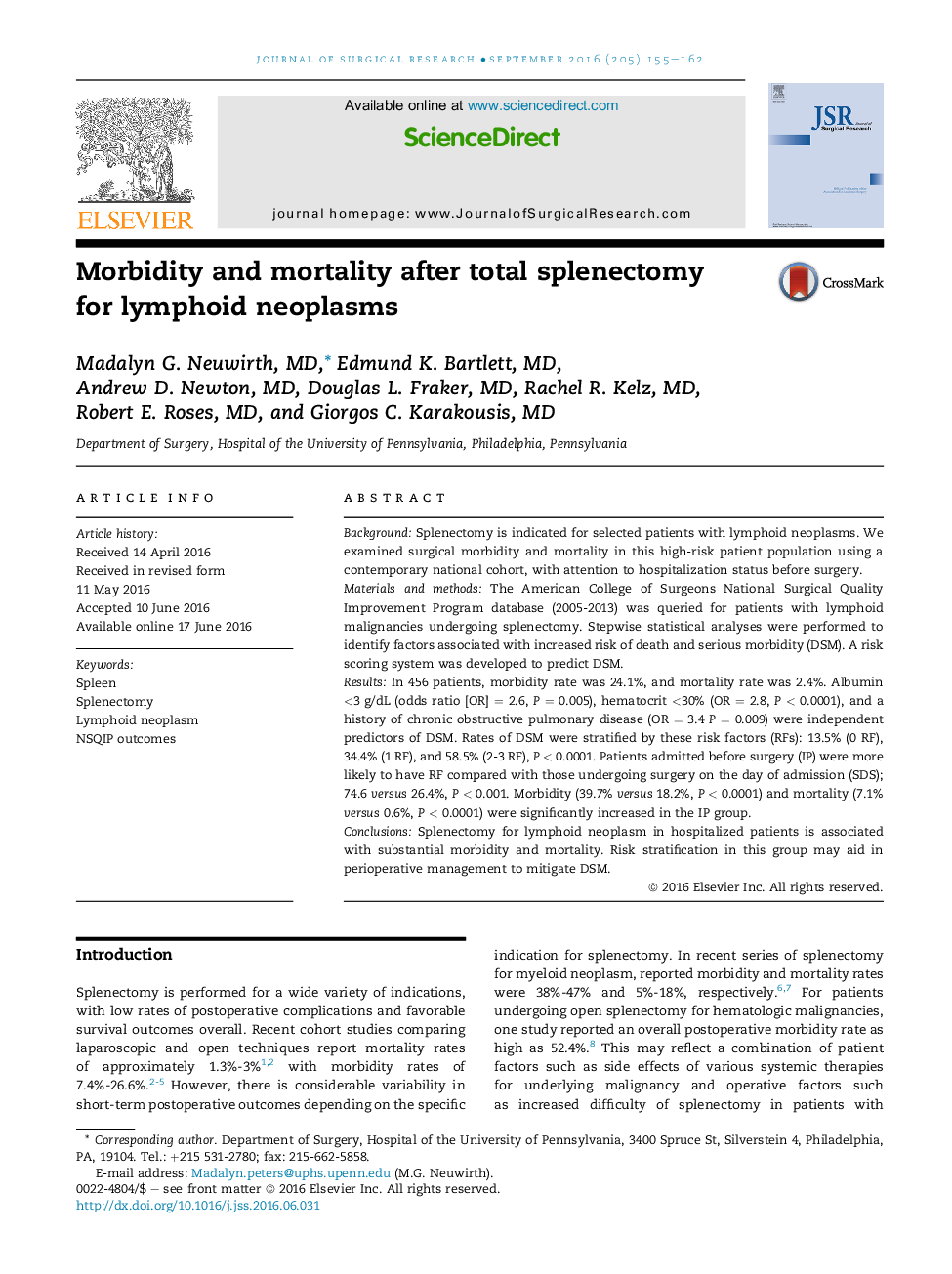| Article ID | Journal | Published Year | Pages | File Type |
|---|---|---|---|---|
| 4299333 | Journal of Surgical Research | 2016 | 8 Pages |
BackgroundSplenectomy is indicated for selected patients with lymphoid neoplasms. We examined surgical morbidity and mortality in this high-risk patient population using a contemporary national cohort, with attention to hospitalization status before surgery.Materials and methodsThe American College of Surgeons National Surgical Quality Improvement Program database (2005-2013) was queried for patients with lymphoid malignancies undergoing splenectomy. Stepwise statistical analyses were performed to identify factors associated with increased risk of death and serious morbidity (DSM). A risk scoring system was developed to predict DSM.ResultsIn 456 patients, morbidity rate was 24.1%, and mortality rate was 2.4%. Albumin <3 g/dL (odds ratio [OR] = 2.6, P = 0.005), hematocrit <30% (OR = 2.8, P < 0.0001), and a history of chronic obstructive pulmonary disease (OR = 3.4 P = 0.009) were independent predictors of DSM. Rates of DSM were stratified by these risk factors (RFs): 13.5% (0 RF), 34.4% (1 RF), and 58.5% (2-3 RF), P < 0.0001. Patients admitted before surgery (IP) were more likely to have RF compared with those undergoing surgery on the day of admission (SDS); 74.6 versus 26.4%, P < 0.001. Morbidity (39.7% versus 18.2%, P < 0.0001) and mortality (7.1% versus 0.6%, P < 0.0001) were significantly increased in the IP group.ConclusionsSplenectomy for lymphoid neoplasm in hospitalized patients is associated with substantial morbidity and mortality. Risk stratification in this group may aid in perioperative management to mitigate DSM.
